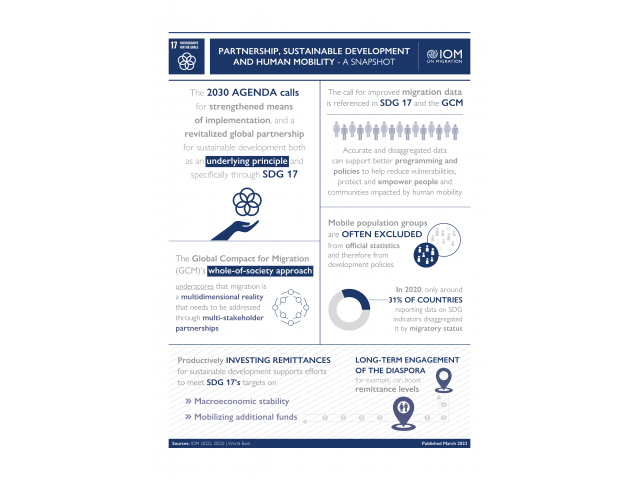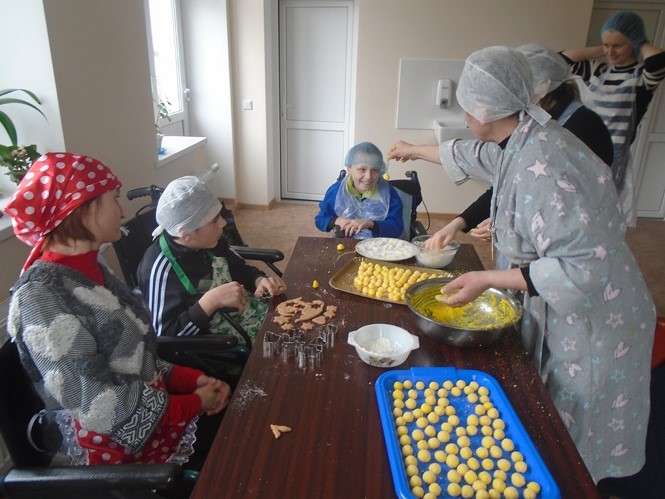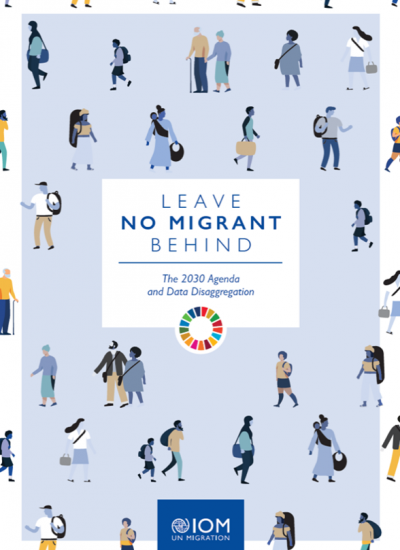The 2030 Agenda calls for a revitalized global partnership for sustainable development both as an underlying principle and specifically through Goal 17. This call is echoed in the Global Compact for Migration’s (GCM’s) “whole-of-society approach”, which underscores how effective migration governance requires partnerships with migrants and diaspora. Long-term engagement of the diaspora, for example, can boost remittance levels and their productive investment for sustainable development, meeting Goal 17’s targets on mobilizing additional funds and macroeconomic stability.
Similarly, Goal 17 calls for improving migration data and increasing disaggregation of data by migratory status. Strong partnerships boost capacities to address gaps in the quantity, accuracy, timeliness, comparability and accessibility of migration data. Strengthened migration data can also support better programming and policies to help protect and empower vulnerable groups. Finally, Goal 17 calls for multi-stakeholder partnerships that enhance policy coherence for sustainable development which is further elaborated in the GCM’s “whole-of-government approach.” Integrating migration considerations across other policy areas and ensuring that sub-national and national migration and sustainable development actors coordinate will best leverage migration for sustainable development.
But the linkages between partnerships and migration don’t stop there. They are context-specific but also often cross-cutting with other sector areas such as:
- Environment and Climate Change: The impacts of climate change on mobility must be tackled with robust partnerships. For example, regional partnerships can mitigate the impacts of climate change on cross-border ecosystems and local-national coordination can provide services and protection for internal climate-induced displacement. (In line with SDGs 6, 7, 12, 13, 14 and 15)
- Employment: Innovative multi-stakeholder partnerships can protect and empower labour migrants. Partnerships with recruitment agencies promote ethical recruitment, while bilateral labour migration schemes and cooperation with trade unions and the private sector protect labour migrants rights. (In line with SDGs 1, 2, 8 and 10)
- Governance: Good governance protects migrants’ rights through institutions that include migrants and displaced persons and are responsive to their needs. Similarly, strong partnerships between local and national authorities can ensure that governance efforts reflect migration realities in local communities. (In line with SDG 3, 4, 5, 11, 16)
- Private Sector Development and Trade: Strong partnerships between the private sector and other migration actors (diasporas, migrants’ associations, governments etc.) can enhance the mutually beneficial relationship between businesses who gain skilled employees, innovation and new markets and migrants who gain livelihood opportunities, income and skills. (In line with SDG 8 and 9)


